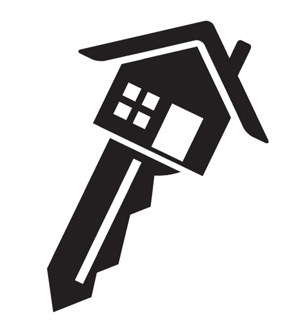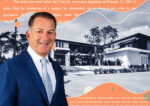Trending
Mortgage déjà vu?

During most of this cycle, buyers have had access to some of the cheapest home loans in American history. Until last November, a borrower with excellent credit could get a 30-year fixed-rate mortgage at 3.5 percent, an unprecedented situation.
The days of very low interest rates dragged on far longer than anyone expected and are finally, definitively, coming to a close — predictions put interest rates for 30-year fixed-rate mortgages at 4.75 percent by the end of this year.
For lenders and buyers, this will mean many changes: a rise in nonbank lending, more nonqualified mortgage (non-QM) loans in the market and a struggle for the self-employed to find loans. It also means the end of the refinance boom. The net effect of these changes — on the larger housing market and even the national economy — is yet to be determined, but the anticipation is already having an impact on the market.
Buyers jumping in
“We’ve been so spoiled!” Alicia Cervera, owner of South Florida brokerage Cervera Real Estate, said of the low rates. But she said that so far, rising rates have not been an issue for the high-end buyers she works with. “The ‘Trump effect,’ as we call it down here, has been extremely positive.”
Brokers in South Florida say the stock market’s performance and a sense that rates will rise have pushed more buyers into the market in the last three months.
“A lot of people who weren’t ready to buy are actually pulling the trigger sooner; their purchasing power drops as rates rise,” said Brandon Brotsky, a mortgage broker with the Stephens-Brotsky Group in Fort Lauderdale.
And mortgage lenders aren’t pulling back, at least not across the board, said Aaron Terrazas, senior economist at Zillow. “There’s a sense that the regulatory environment is going to become more friendly,” Terrazas said, explaining that lenders are playing a sort of “waiting game.”
From mid-November 2016 through mid-January, interest rates surged, although by February they had dipped back down to their lowest levels since the election. As The Real Deal went to press, Zillow estimated a credit borrower could get a rate of 3.85 percent on a 30-year fixed-rate; a broker put that as low as 3.65 percent, albeit with high origination fees. Many loans are already at or above 4 percent, and the Mortgage Brokers Association predicts interest rates will tick in at 4.5 to 4.75 percent by the end of the year.
Higher interest rates don’t perfectly correlate to a slower market, however. First-time homebuyers are not terribly “rate-sensitive,” said Dan Sampson, owner and broker at Inlet Mortgage. Rising rates are more likely to decimate the markets for refinancing and second homes. The MBA’s latest estimates had refinancing dropping 55 percent year-over-year by the end of 2017.
Risky business
For many borrowers, higher rates mean they either pay up (although rates are still near historic lows) or they can take their business to lenders like Provident Funding or Freedom Home Mortgage, which pride themselves on giving the lowest rate possible. However, Provident requires excessive paperwork to finalize a loan, brokers said, while Freedom Home has limited customer service for borrowers.
 Most mortgage deals in Miami-Dade and Broward counties are Federal Housing Authority-backed, which have different sensitivities than the jumbo loans that new-development buyers often need. Instead of remaining on a bank’s balance sheet, FHA loans are siphoned off to Fannie Mae and Freddie Mac, the government-sponsored enterprises.
Most mortgage deals in Miami-Dade and Broward counties are Federal Housing Authority-backed, which have different sensitivities than the jumbo loans that new-development buyers often need. Instead of remaining on a bank’s balance sheet, FHA loans are siphoned off to Fannie Mae and Freddie Mac, the government-sponsored enterprises.
No one knows how the new administration will treat FHA borrowers or Fannie and Freddie. For FHA loans, the environment had grown increasingly lenient recently, brokers said, although a planned cut in the rate of mortgage insurance for FHA borrowers was scrapped by the Trump administration an hour after the president took office. More changes are on the horizon, too. Self-
employed borrowers in particular are likely to see their financing options shrink soon, when rules requiring them to either own a business for five years or submit twice as much documentation to qualify for a Freddie Mac loan are slated to hit this month.
Over the last few years, the shift in non-jumbo residential mortgages has been toward nonbank lenders. “The major lenders, the big banks, have pulled back [this cycle],” said Terrazas. The top nonbank lenders in Miami are American Home Mortgage, Home Point Financial and Smarter Mortgages, according to Zillow’s data.
But as nonbank lenders’ foothold in the business has grown, so have certain riskier segments of the market that, to some, feel like 2005 or 2006 all over again.
The major worry would be a deluge of “no-documentation” agency loans, Brotsky said. Those are mortgages that don’t require any data showing the borrower is qualified, that are then both securitized and effectively guaranteed by the government. While we’re not quite there yet, brokers said some companies are doing non-QM deals, and often some of them have no documentation. The main players in non-QM loans at the moment are nonbank lenders such as Angel Oak and Citadel Servicing. Both companies said those loans are performing well and that these products are nothing new for them, even when it comes to no-documentation loans. They also said Dodd-Frank restrictions leave many borrowers with no option other than non-QM loans.
Regulators “can’t do much about those smaller companies that are doing it,” Brotsky said. “They aren’t doing it with nothing down or 5 percent down, though,” he said, as lenders did before the crisis.
Tom Hutchen, senior vice president of sales and marketing at Angel Oak, said that “the primary difference between non-QM production today and pre-crisis lending is skin in the game,” adding that the secondary market would collapse if investors didn’t retain risk in the deals, and this “differentiates today’s market from the past.”
Multiple sources said non-QM loans are expected to rise this year. With rates in the mid-6 and 7 percent range, they are comparatively lucrative. There is “a lot more interest in non-QM loans because refinancing has dried up,” Terrazas said.
Some have called the mortgages “the new subprime loan.” Brian Grow, managing director, ABS and RMBS at Morningstar Credit Ratings, disagrees with that characterization. “Fraud was a big risk before,” when things went sour with mortgages in 2007 and 2008, he said. “Now everybody is on high alert.”
There are also valid reasons for non-QM loans for certain borrowers. For the self-employed, it may be the only way to get a mortgage. Brokers shied away from hard estimates on what percentage of total origination non-QM loans make up; one suggested it’s about 5 percent right now.
A more pressing systemic risk in the South Florida mortgage market is the lack of cash reserves, said Sampson. The application process for FHA loans does not look at bank account balances, he said, and many first-time buyers don’t have the funds to carry their costs if they lost a job or had a health emergency. Furthermore, if they hit the skids soon, they could in many cases have minimal equity in their home — recently, Freddie Mac rolled out loans for first-time buyers that require only 1 percent down.
Softening luxury market
The other major segment of Miami’s housing market in terms of dollar volume bears little or no relation to the rest: luxury condos. Many are bought by foreign nationals, which has sparked fears in the Miami real estate community, both given the new administration’s hostility to immigrants and the dominance of the dollar. “When the dollar started being stronger, it had an adverse affect on our market,” Cervera said.
When foreign nationals buy pricey condos with financing, they generally get bank-originated portfolio loans. It remains to be seen if banks will continue to play in that space.
On the one hand, demand for that type of financing will likely rise due to the strong dollar. Peter Zalewski, founder of real estate consultancy Condo Vultures, said “the foreign buyer is really sort of handcuffed” to whatever rates the bank might ask for if they want to buy in the U.S. in this climate.“Even if rates go up, I see more mortgage financing. I think many banks are going to expand their options for jumbo mortgages,” he said. The major lenders in that space include JPMorgan, Wells Fargo and Bank of America.
On the other hand, “Miami has already seen some softening, particularly in the high-end market,” according to Terrazas. Markets with overextended buyers will be most susceptible to interest-rate-related turmoil, he added, and prices in Miami have risen more quickly than in other markets.
Zalewski had a more dire diagnosis for the condo market: “2016 was the peak of the cycle. This is the transition phase; people will be in denial on the sell side. By 2019, we’ll see the lowest prices.”




